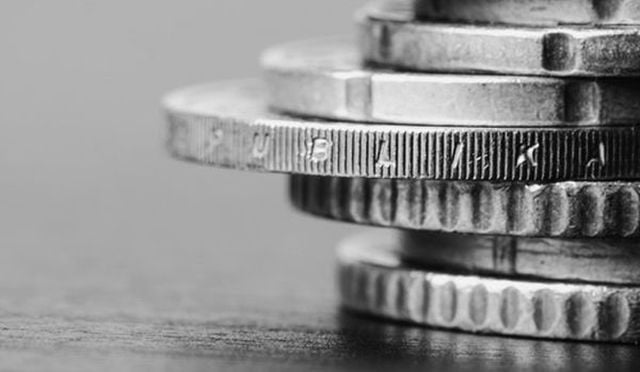Investors are underestimating the scale and trajectory of the US dollar’s decline, both in value and in its long-standing role as the world’s unrivalled reserve currency.
The greenback has had its weakest start to a year since 2008, down more than 4% on the Dollar Index (DXY), as markets begin to digest interest rate cut expectations, a revival of protectionist trade policies, and rising geopolitical friction under the Trump administration.
But despite these signals, investor reaction remains muted.
Central banks around the world are gradually unwinding their reliance on the dollar. The currency now accounts for just under 59% of global reserves, according to the IMF, down from more than 70% at the start of the century.
“We don’t believe this is a short-term wobble. It’s the opening phase of a steady but far-reaching shift,” said Nigel Green, chief executive of deVere Group. “Dollar supremacy isn’t vanishing overnight, but its era of unquestioned dominance is fading. This carries enormous consequences for global portfolios, pricing, and capital allocation. This decline is not a crash, it’s erosion.”
Part of this trend is structural, with emerging economies building out their financial systems. But increasingly, it’s a strategic shift. There’s growing discomfort with the idea of the dollar being used as a political instrument.
“Degrading expectations for the US economy, driven by tariff uncertainty, are a core source of potential continued dollar weakness,” said Simeon Hyman, global investment strategist with fund manager ProShares. “But other sources of concern, such as the Federal Reserve’s independence and a potential global impetus to reduce reliance on the US, put the dollar’s status as the world’s reserve currency at risk for the first time in more than half a century.”
Which currency is going to bid for the USD’s crown?
The Euro has emerged as one of the clearest alternatives. It has surged more than 4% against the dollar in the past fortnight alone, buoyed by Europe’s moves toward fiscal coordination, collective defence investment, and economic resilience. Reserve managers are responding.
The Euro is repositioning itself not just as a regional anchor, but as a serious global stabiliser. That doesn’t mean it will replace the dollar, instead it’ll be part of a broader mosaic of major currencies taking on more influence.
Across Asia, shifts are accelerating too. Japan’s yen has found fresh strength on safe-haven flows. The South Korean won is showing renewed resilience. China’s yuan continues its climb as Beijing signs cross-border trade agreements that sidestep the dollar entirely. FX analysts don’t think any single currency is about to take the dollar’s place – instead they forecast a more fragmented system, one where influence is shared across a handful of credible currencies. This evolution is gradual, but it’s no less profound.
At the same time, policies that once would have supported the dollar are now feeding its weakness. New tariffs have triggered a counterintuitive surge in the Canadian dollar and Mexican peso, signalling that investors now see these measures as signs of instability rather than economic strength.
- Emerging markets seeing biggest rally in 15 years
- French bond market is challenging the Eurozone thesis
- Gold price surges to record highs above $3,575 as investors flee to safety
Dollar will lose its yield premium
Meanwhile, at home, the rationale for a strong dollar is weakening. Markets now expect the Federal Reserve to deliver up to three rate cuts by year-end. That erodes the yield premium that has long underpinned global appetite for dollar-denominated assets.
This shrinking rate gap makes US debt less attractive. And when demand for Treasuries softens, so does demand for dollars.
“It came as a bit of a shock in April when stocks and bonds dropped at the same time,” says Hyman at ProShares. “An increase in downside risks to the U.S. economy, usually expected to drive down longer-term interest rates on Treasurys, were seemingly overwhelmed by the “de-dollarization” trade.”
While a softer dollar may temporarily lift exports and benefit US companies with foreign earnings, there are limits. Nearly half of US goods are imported. A weaker currency means higher prices for inputs, more inflation pressure, and greater strain on consumers. With America’s manufacturing base hollowed out, there’s no fast route to self-sufficiency.
What should investors be doing?
“Investors must stop assuming the dollar will always rebound. That thinking is dangerously outdated,” says deVere’s Green. “The shift to dominant currency plurality is underway. Those clinging to the old model risk being blindsided.”
As capital begins to rotate into assets tied to other major currencies, governments, institutions, and global businesses will need to recalibrate. Trade terms will be redrawn. Price strategies will adjust. And markets that prepare now will gain first-mover advantage.
Dollar dominance isn’t over — but it’s being critically diluted.




















